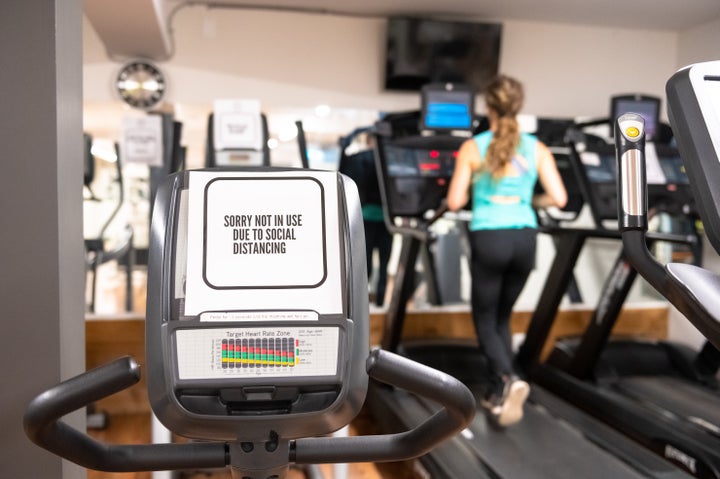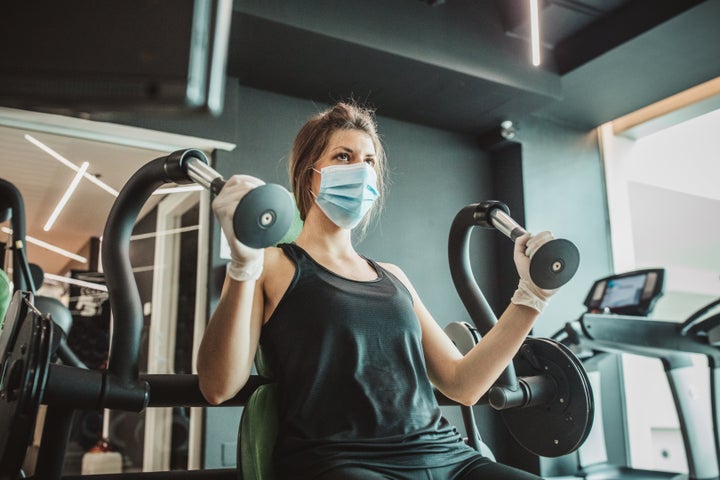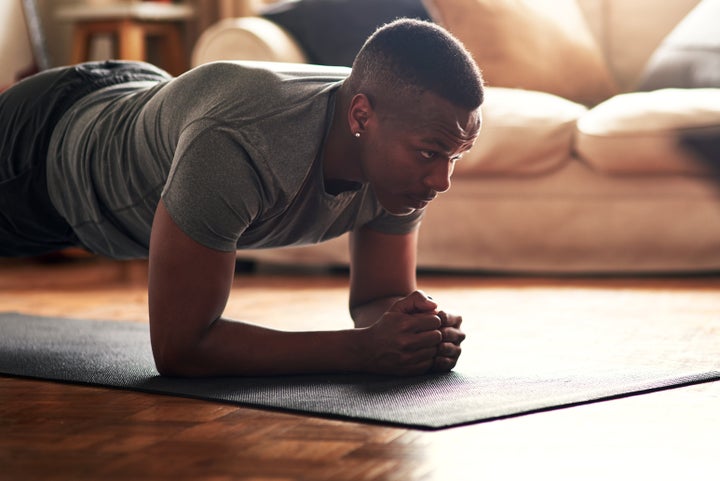For the first time since the coronavirus pandemic began, gyms across the country are beginning to reopen. The exact timelines and rules vary by state, but precautions are necessary no matter where you live.
In addition to following the day-to-day prevention guidelines set forth by the Centers for Disease Control and Prevention — staying 6 feet away from people outside of your household, wearing cloth masks, frequent hand washing and more — it is imperative that those returning to the gym take extra precautions to protect their own health and the health of other gym-goers and gym staff.
Like any space that is open to the public during the pandemic, going back to the gym comes with its own set of concerns.
“It’s important to remember that even though gyms are open, it doesn’t mean the virus is gone,” explained Amesh Adalja, a senior scholar at Johns Hopkins University Center for Health Security. “And no activity in the absence of a vaccine is going to be without risk. That being said, people that want to go to the gym can do so in a manner that is relatively safe ― but there is not going to be zero risk.”
If you’re going to head out to your fitness center, take caution. Below, public health experts from across the country share their warnings and suggestions.
Figure out your gym’s precautions before going back.
“I would recommend calling the gym and asking them what they are doing to reduce the likelihood of transmission and acquisition of coronavirus in their facilities,” said Susan Hassig, associate professor in epidemiology at Tulane University.
Hassig said that the gym should have spaced out equipment, specified procedures for decontamination and disinfection of equipment in between uses, an established face mask policy, and perhaps require reservations for entry.
If they have those protocols in place, then that’s a good sign. But don’t just take the gym’s word for it, Hassig said. You should do an assessment when you get there to see if what you were told aligns with the way the gym looks and the way the staff acts.
“If your gym told you that people are supposed to be wearing masks in their facility and the staff are not wearing masks, I would turn around and walk out,” Hassig said. “If you’re being told one thing and then you see something else, I would be concerned about what else they told you.”

Avoid congregation points.
To comply with the CDC’s 6 feet apart recommendation, it is important to keep space between you and other gym-goers while working out and while making your way through the gym.
“You should avoid places in the gym where people might congregate — for example, where people are filling up their water bottles or where people are in line to get into a room for a class, if gyms are having classes,” Adalja said.
For those who want to be even more careful, Adalja recommended going to the gym at off hours to further avoid groups of people.
Wear a face covering and consider keeping vigorous exercises outside.
“Although we realize some people might not want to wear a face cover while exercising, we do recommend that gym-goers wear one when interacting with others not from your household to minimize the risk of transmitting the virus,” said Kate Grusich, a CDC spokesperson. “This may depend on activity type and intensity, and is most important when physical distancing is difficult.”
She added that the CDC recommends people do more vigorous exercises — like running and biking — outside whenever possible. Additionally, those going back to the gym should consider going to gyms that have outdoor facilities for working out.
Skip the group workout classes for now.
“I would not, at this point in time anywhere in the United States, engage in any kind of group activity,” Hassig said. “Maybe yoga if the mats are spaced apart, or pilates, but anything aerobic or cardiovascular in a group setting I would not recommend.”
She noted that classes will likely be held in an enclosed space with a number of people, so keeping distance will be really difficult — and if it’s aerobic, you won’t want to be masked. Also, due to the movement throughout the room, there is too much of a possibility of shared breathing areas and potentially contaminated particles.
Disinfect shared equipment before use.
Even if your gym is disinfecting equipment, it pays to be vigilant and to take extra precautions for your own safety and peace of mind.
“Ensure equipment is clean and disinfected. Wipe down machines and equipment with disinfecting wipes and use hand sanitizer that contains at least 60% alcohol before using machines,” Grusich said.
She added items that cannot be cleaned, sanitized or disinfected between use — like resistance bands and weightlifting belts — should not be shared.

Avoid saunas and steam rooms until future notice.
It should go without saying, but hot, enclosed spaces are not a place anyone should be before there is a coronavirus vaccine.
“I would strongly urge people not to use saunas or steam rooms at this point in time. They’re small, contained spaces — and how do you clean them in between uses? They’re just really problematic,” Hassig said. “A room that is closed in to keep steam inside is not going to allow the kind of air flow necessary, it’s instead going to allow for the suspension of particles.”
Remember that there is a risk associated with going to the gym until there is a vaccine.
Adalja stressed that there is a common misconception right now that it’s fine to do things like go to the gym, and more people are throwing caution to the wind as states reopen. He noted that there will be no completely safe time to take part in your normal pre-pandemic activities until there’s a vaccine available.
“The risk of this virus isn’t going to go away until there’s a vaccine. Nothing is going to change … This is a new normal,” Adalja said. “That’s important for people to know as they start to get back into their life — they have to find a way to pursue whatever activities and values they have knowing that there’s a risk.”
If you are heading out once your state deems it’s OK to do so, you should still evaluate your personal risk and consider the risk of others in your circle. Adalja stressed the importance of being safe and weighing your options; ignoring the existence of the coronavirus isn’t an option.
“People have to find a middle way to cope with it or learn to live with the virus because it’s not going anywhere,” Adalja said.

Stay home if you don’t feel well or are unsure.
“As a reminder, if you have COVID-19, have symptoms consistent with COVID-19, or have been in close contact with someone who has COVID-19, it is important to stay home and away from other people,” Grusich said.
Signs of infection include fever, body aches, loss of taste or smell, and trouble breathing. Many people, however, can be asymptomatic so keep that in mind as well.
It is crucial to prioritize your own health and the health of those around you. Do not go to the gym if you are not feeling 100% healthy or if you’ve been exposed to the coronavirus.
Experts are still learning about the coronavirus. The information in this story is what was known or available as of press time, but it’s possible guidance around COVID-19 could change as scientists discover more about the virus. Please check the Centers for Disease Control and Prevention for the most updated recommendations.
A HuffPost Guide To Coronavirus
Credit: Source link